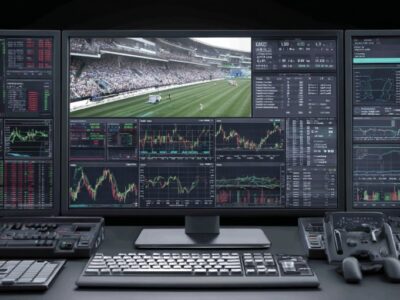Automation isn’t just a buzzword; it’s already changing the financial markets in real-time. Trading robots—what used to sound like something from a sci-fi movie—are now very much a part of daily trading operations. And this isn’t just happening on the outskirts of trading. Day by day, robots are taking front-row seats in how trades are executed across global markets.
We’ll explore how trading robots are revolutionizing finance, making trading faster, more efficient, and accessible to all kinds of investors.
How Trading Robots Work
Let’s break this down. Trading robots (sometimes called “bots”) are systems—built on complex algorithms—that can execute trades without human input. They’ve been programmed to take action based on market conditions, reducing the need for human decision-making. These bots monitor market trends, analyze massive amounts of data, and choose the right moments to buy or sell.
And here’s what makes it valuable: real-time execution. A human trader might take seconds to react to a market swing—but for a bot, it all happens in milliseconds. No hesitation. No second-guessing.
The Speed Factor: Real-Time Processing
Speed is one of the biggest selling points for trading robots. Human operators can’t keep up with the sheer velocity these machines work at. Take high-frequency trading (HFT) for example. In HFT, bots execute millions of transactions in the blink of an eye, capitalizing on tiny price differences that a human would likely miss.
Humans? They’ll feel the pressure, get caught up in emotions like fear or greed. Bots? No emotions, just cold, hard logic.
No More Emotional Trading
One of the age-old problems in any kind of investment is emotional trading. It’s something that goes back centuries—the human inclination to panic or jump into a market impulsively. Trading robots don’t have this issue. They follow the protocol, strictly sticking to the plan they were programmed to execute.
Bots don’t care if a stock or currency just crashed or skyrocketed. If the parameters aren’t there, they won’t act. Removing emotional interference from the trade helps keep strategies controlled and, over time, can mean more consistent results.
Why Are Bots Changing the Game for Investors?
This is a big one: accessibility. Trading robots make financial markets more accessible to a variety of investors, from individuals to large businesses. Here’s why:
- Lowering the Barrier to Entry: You don’t need ten years of hardcore market experience to dive in. Automated systems do the heavy lifting.
- Continuous Market Monitoring: Bots don’t sleep. You, on the other hand, have other things to do. Automation allows for 24/7 monitoring and trading—even while you’re offline.
- Efficiency in Strategy Execution: Automated systems run through sophisticated simulations and trade according to logic, not gut feelings. By automatically adjusting to market swings, bots keep strategies aligned, even in volatile conditions.
Efficiency vs. Manual Trading
Manual trading relies heavily on analysis, skill, and experience. It’s time-consuming. And while experienced traders can navigate ups and downs, they are often left making split-second decisions that can make or break returns.
Trading robots, on the other hand, are executing trades based on a pre-loaded strategy. The difference between a win and a loss may be margins of cents. But a bot takes these slim opportunities and capitalizes on them hundreds or even thousands of times per day.
Does this mean bots are always successful? No. But they thrive by executing strategies consistently and rapidly—often performing better than human traders, simply because time isn’t wasted with decision-making.
Conclusion
As more businesses and individual investors adopt trading robots, it’s clear that automation isn’t a trend that’s going away. We’re only getting started. The role of human traders will likely shift more towards strategy creation and oversight, while execution is fully handed over to automation. And it’s not just happening in stock or Forex markets. Even areas like cryptocurrency trading are seeing robots take the helm.
The question isn’t whether automation will completely take over—it likely will—but rather how everyone else will adapt to keep up.













